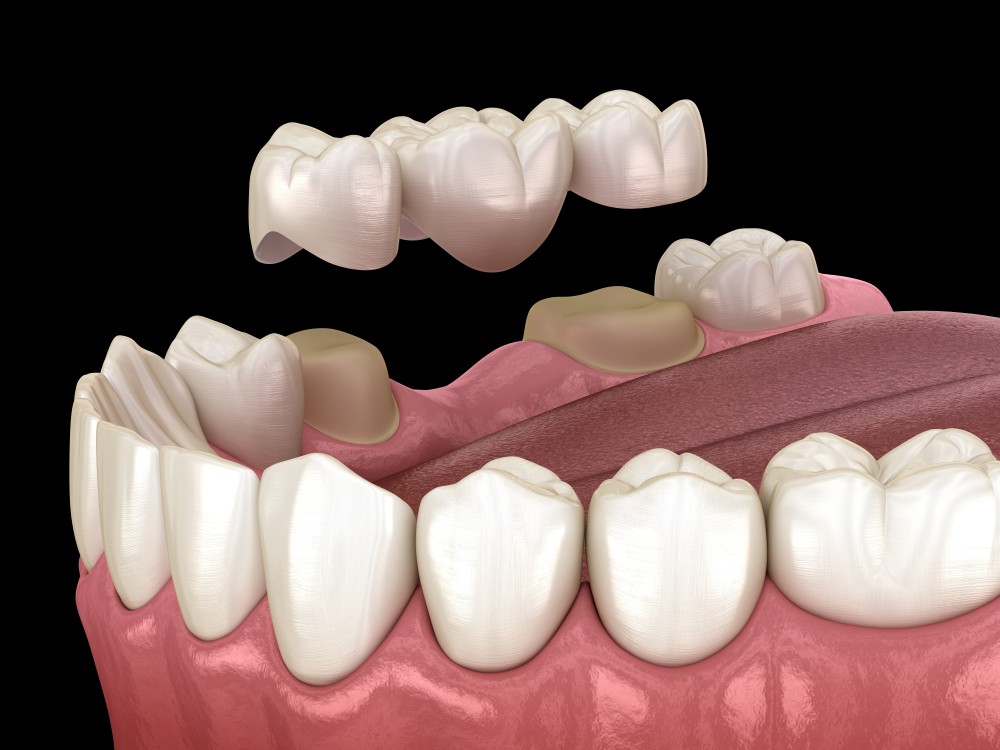Dental Bridges

Dental bridges are a common restorative dental treatment used to replace one or more missing teeth. A bridge is composed of two or more crowns for the teeth on either side of the gap, known as abutment teeth, and a false tooth or teeth in between, called pontics. These pontics can be made from various materials such as porcelain, gold, alloys, or a combination, and are designed to blend seamlessly with your natural teeth.
The process of getting a dental bridge typically involves multiple visits to the dentist. During the first visit, the abutment teeth are prepared by removing a portion of enamel to allow room for the crowns. Impressions of the teeth are then taken and sent to a dental laboratory where the bridge is custom-made. A temporary bridge may be placed to protect the exposed teeth and gums while the permanent bridge is being fabricated.
At the subsequent visit, the temporary bridge is removed, and the new permanent bridge is checked and adjusted to ensure a proper fit. It is then cemented into place. The dentist will ensure that the bridge fits comfortably, matches the color of your natural teeth, and restores proper bite alignment. In some cases, a follow-up visit may be necessary to make any minor adjustments.
Dental bridges offer numerous benefits. They can restore your smile and the ability to speak and chew properly, maintain the shape of your face, and prevent remaining teeth from drifting out of position. Bridges also distribute the forces in your bite properly by replacing missing teeth, thereby preventing additional oral health issues.
